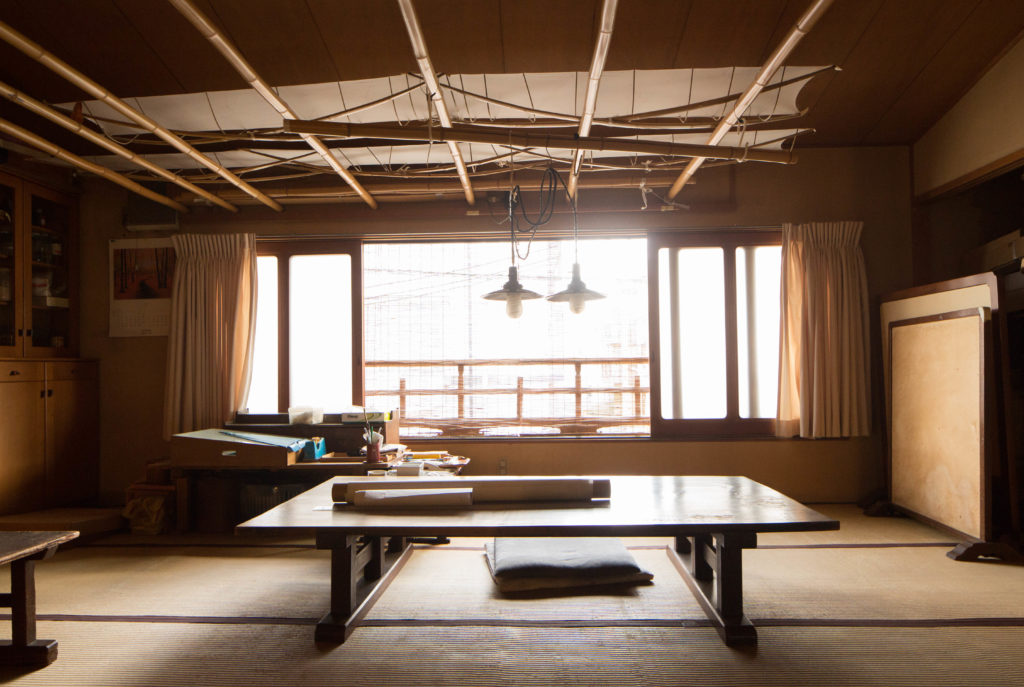The “central capital ward of Kyoto”, Nakagyouku can be traced back to the Heian period, approximately 1000 years ago. It is home to many important cultural properties as well as culturally significant events. In the west end there are quiet neighborhood streets lined with machiya (traditional wooden town houses). Some are a bit neglected, but there are those that have been restored. I love being in a neighborhood and feeling the history of a place. Old neighborhoods are constantly getting erased elsewhere. It is a rare feeling in a country that seems to be in a continuous state of destruction and construction.
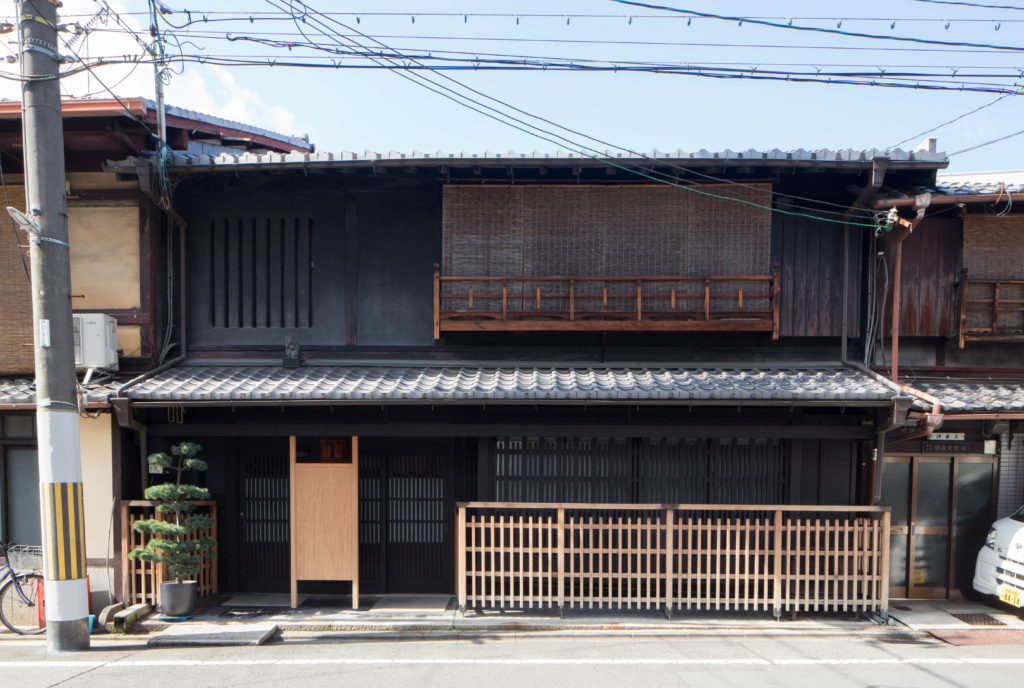
I stand in front of a black stained, beautifully renovated machiya house and ring the bell. A man greets me with a rather reserved and shy manner, and without any eye contact, he invites me inside.
The man is Moriguchi Kunihiko, a ”National Living Treasure” known for his 300 year old Yuzen kimono painting dye methods. His father Kako Moriguchi, who passed away at 98 was also a “National Living Treasure” for the Yuzen method; they are the only father and son in Japan to receive such status.
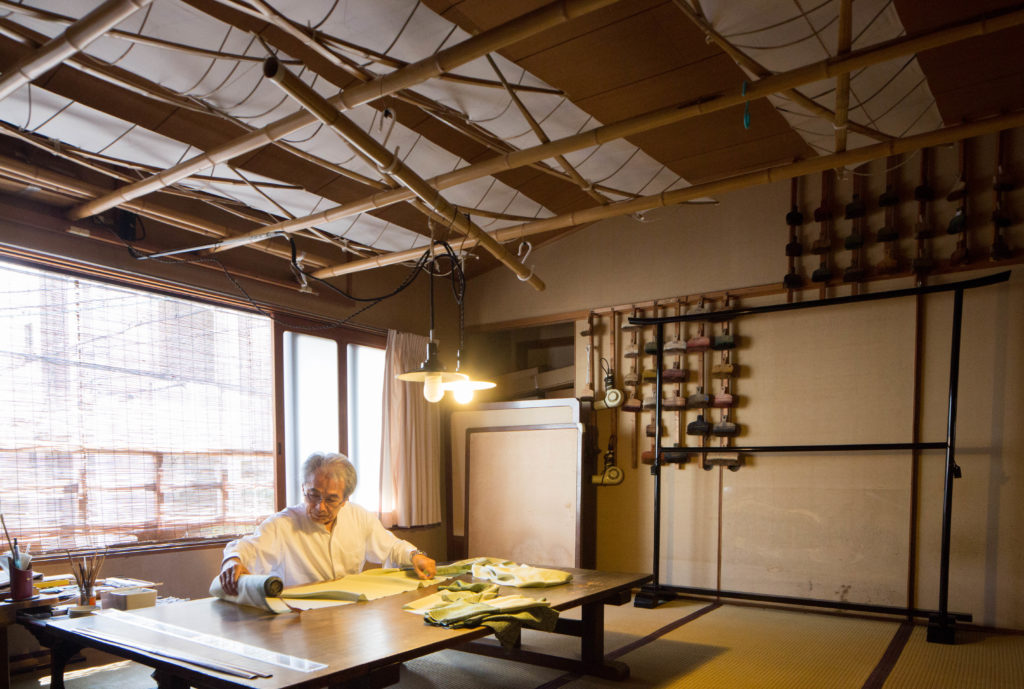
A former painting student at Kyoto City University of Arts, his studies extended to the National Higher School of Decorative Art in Paris where he pursued a graphic design major. In Paris he studied under a former professor from the legendary Bauhaus School, where he was immersed in design, architecture and self – expression. It was Paris where he also met the painter Balthus, for whom he had a great admiration. “His aura was incredible,” says Kunihiko. He took the advice of Balthus and returned to Japan after 3 years in Paris to work under his father and continue the traditional craft of Yuzen.
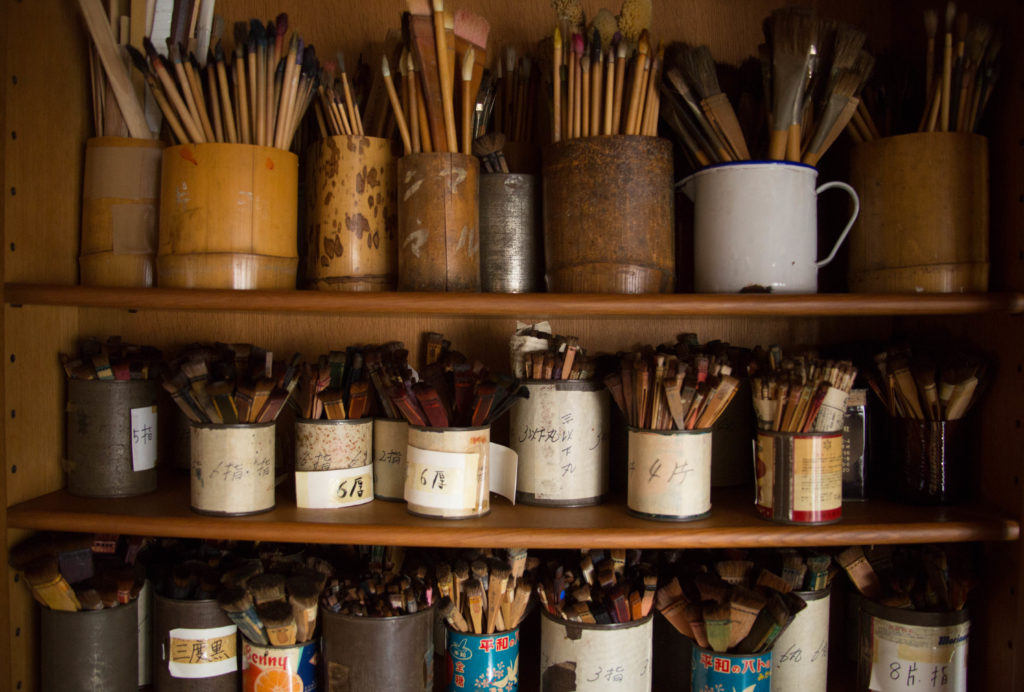
“Hope is a treasure of life” his father use to repeatedly say to him in his last years of his life. “Now that I have turned 80 and in the height of the Coronavirus era his words I can only remember.” My father taught me everything, and he never criticized or gave any advice to my work.
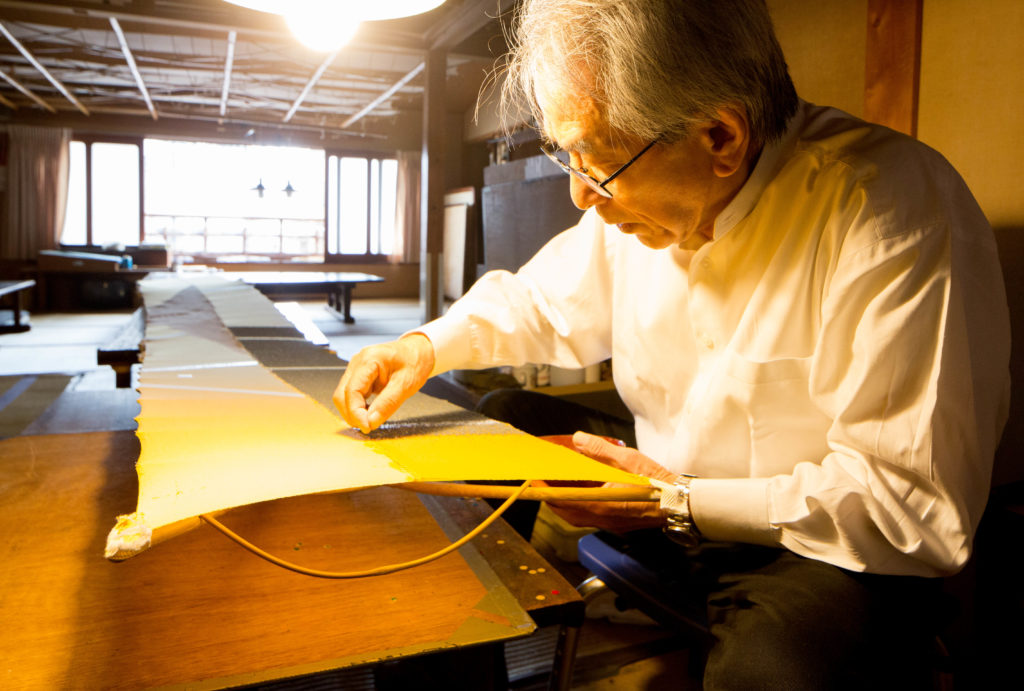
His debut work at 28 (Senka) translates as “Thousand Flowers”, is a bright geometric pattern taken from his graphic design background and influenced by “optical art” transferred into a decorative, kimono pattern. He also carried on his father’s tradition of using the “Makinori” method, which is a bean and Gloiopeltis Glueweed paste mixed into glue which is dried and grated into pebbles that are sprinkled over fabric to create a dusty, snowflake like texture. Kunihiko’s father created this method after 10 years of trial and error. This work received great honor by the Japan Kogei Association and encouraged him to pursue his own career. He continued to win numerous awards after. “I want to keep saying thank you to my father” he says.
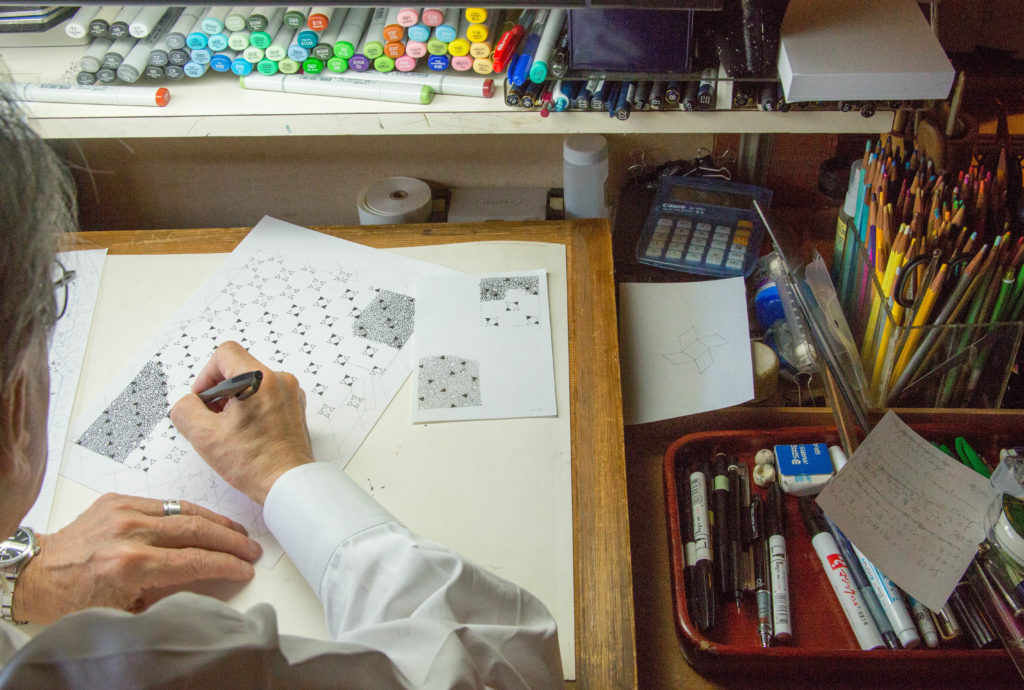
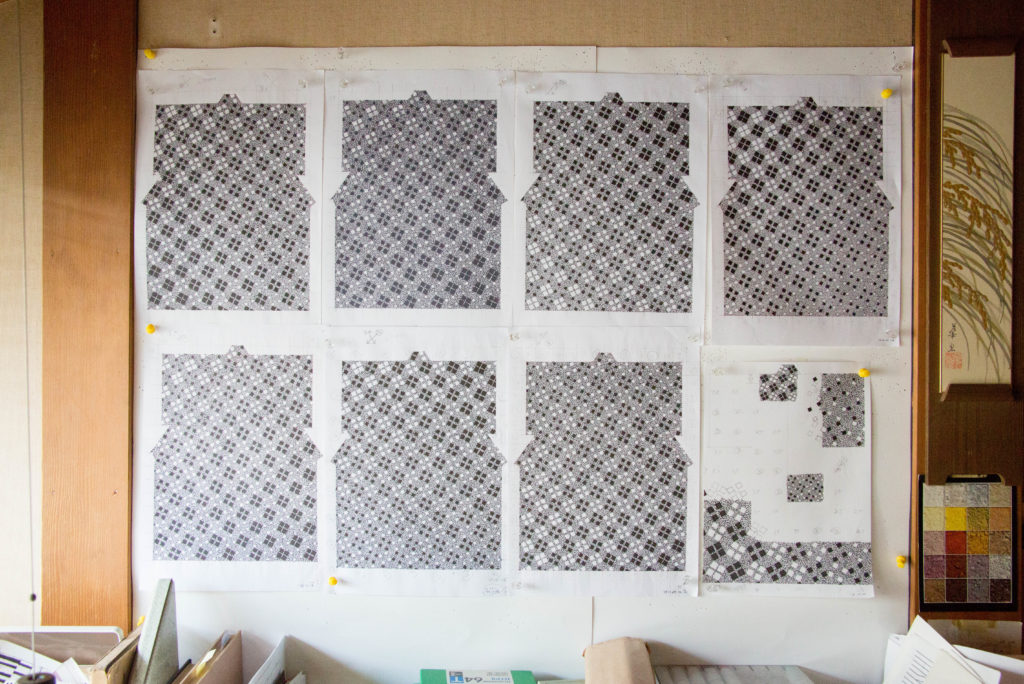
A kimono is cut from a single roll of fabric twelve to thirteen meters and forty centimeters wide in straight lines. This simple invariable pattern fits all body types; it
envelopes the body more than it emphasizes its shapes. The geometric patterns he creates transform after being wrapped around a body. The spiral and movement becomes alive by the female body says Moriguchi.
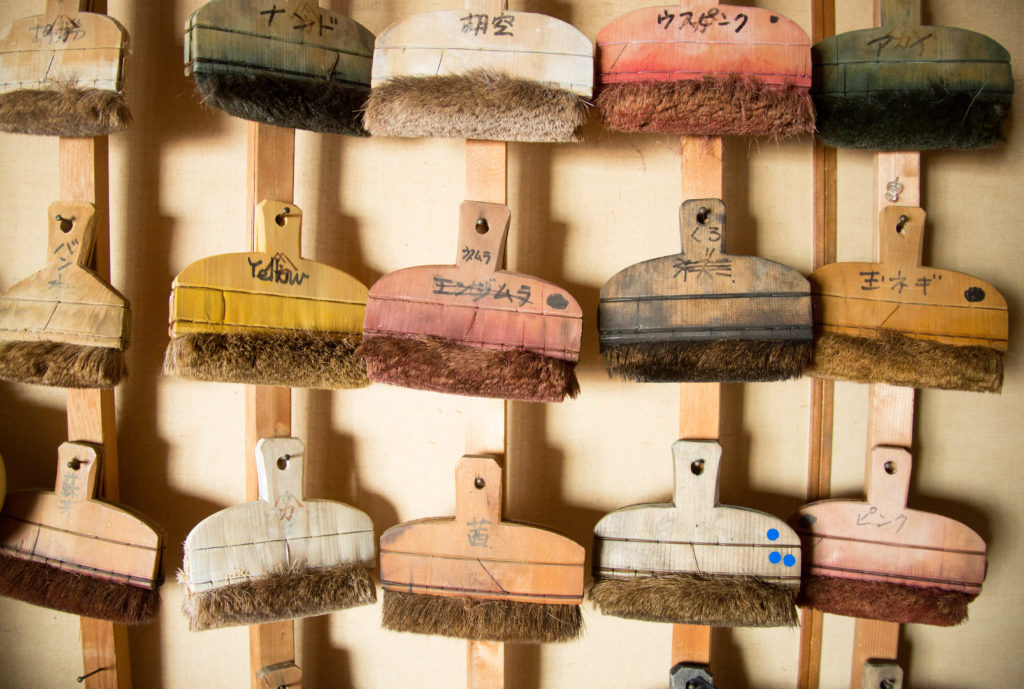
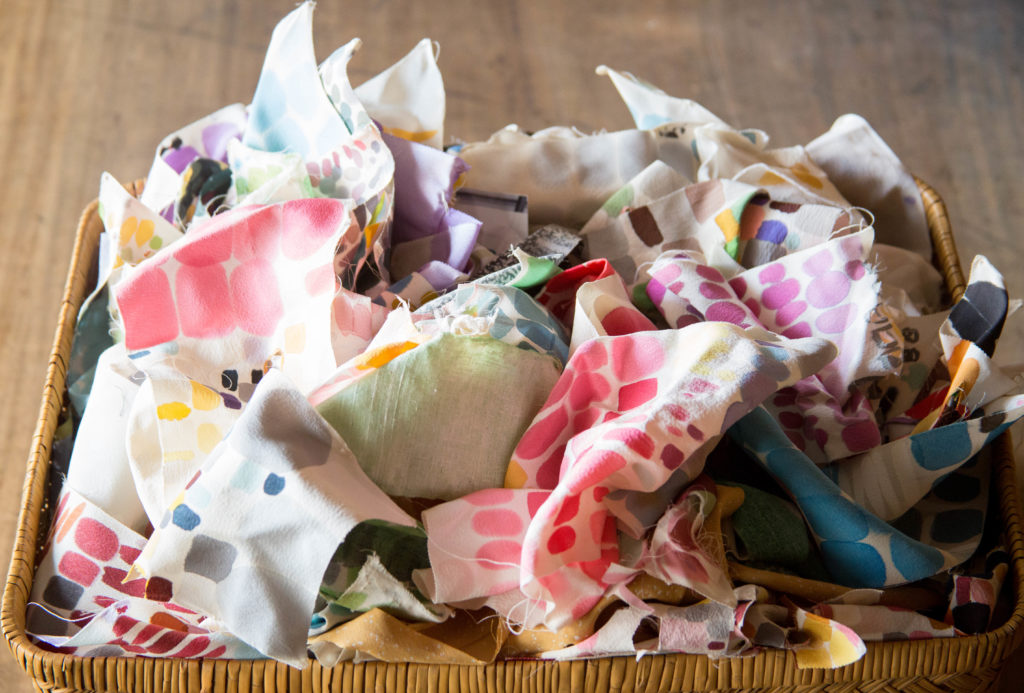
Like his father he takes his inspiration from nature before it becomes an abstract geometric shape. I like to listen to Biber and Mozart. Its bright, fun and sad. Music to me is the most sublime art.
Between traditional and modern, east and west, design and Yuzen, Moriguchi says he thinks like an artist and creates like an artisan. Traditional craft techniques produce nothing but harmony between humans and nature. Traditional crafts should continue to be a symbol of harmony that should be preserved now and in the future. May you continue to meet “beautiful” things and people. He says.
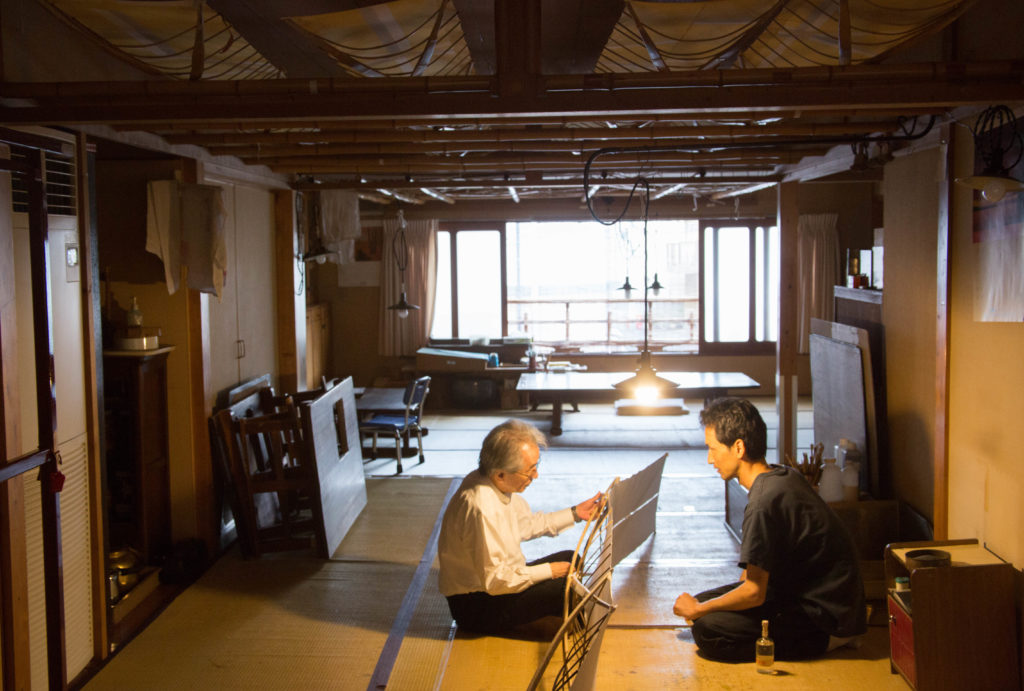
With worldwide attention. His kimono`s sell for between forty to eighty thousand dollars. Collected in major museums worldwide including the MET in New York LACMA, Pompidou Centre, Victoria Albert Museum amongst many others.
As I watched him work, I was mesmerized by the detail oriented task. It was the precision of an artisan at work and required such precision. I could never do such a thing I thought to myself. As I was wrapping up my visit he served me some coffee and sweets. With an awkward silence, we were both hesitant to say anything as I myself am not the most outspoken. But, i quietly gained garnered up a bit of courage and asked him: “What do you think is the basis to the aesthetic of universal beauty?” He answered quickly and matter of factly; “It is the ability of have a childlike eye that thinks without being bound by things!”.
